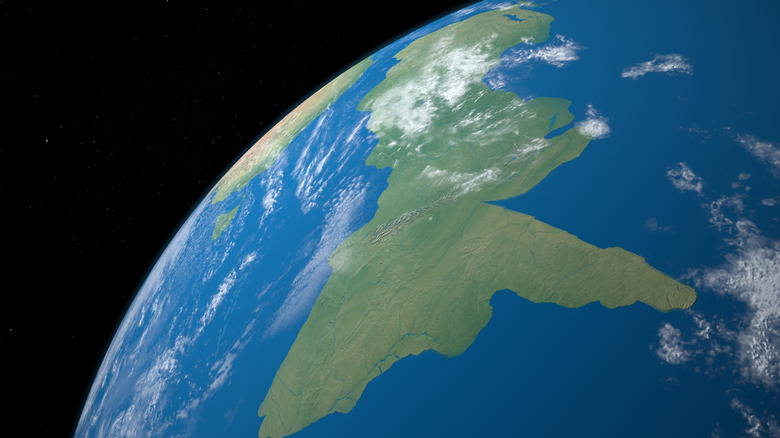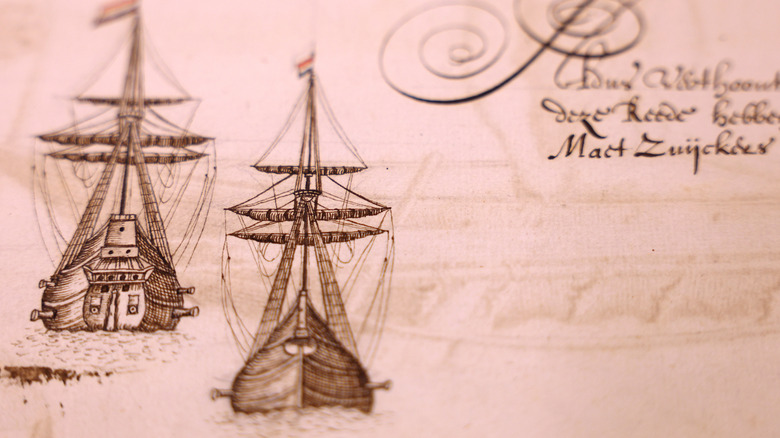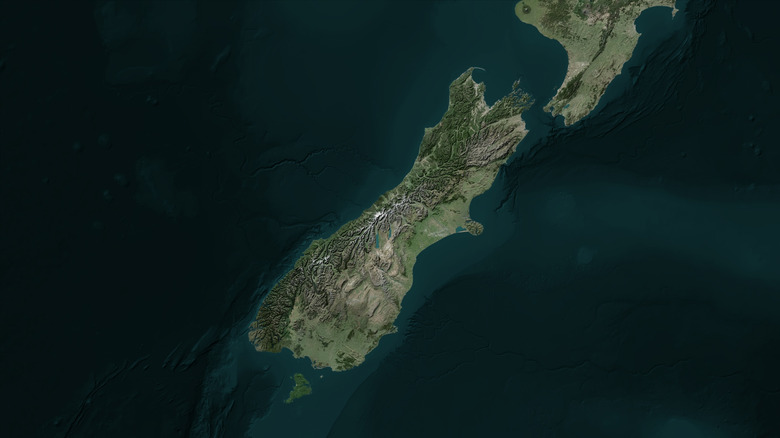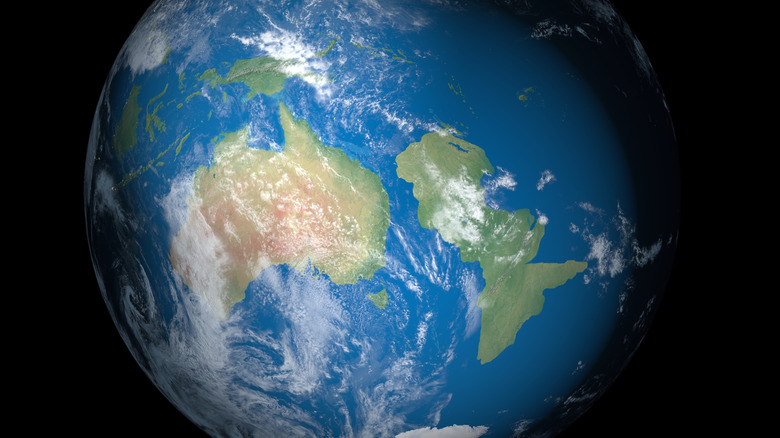What Happened To Earth's Hidden Continent, Zealandia?
In the earliest levels of school, we are taught about Earth's seven continents, but a growing body of evidence has geologists reconsidering this long-held belief. They argue that there are actually eight continents, but one of them escaped our attention because it is almost entirely submerged beneath the ocean. This eighth continent has been named Zealandia, and the most surprising thing about it is that it's actually the youngest continent of all.
Around 280–230 million years ago, the supercontinent of Pangea, which once united all of Earth's landmasses, split apart. In its wake, two new continents formed, Laurasia to the north, and Gondwana to the south. Another 100 million years later, Gondwana had its own breakup, with South America and Africa drifting away and opening up the Atlantic Ocean. After that, Australia and Antarctica split apart, but the forces that shift continents were not done there.
The Antarctica–Australia split also birthed a third continent, which broke away around 80 million years ago. This was Zealandia, and at 1.9 million square miles in size, it claimed the title of Earth's smallest continent. It remained a close neighbor of Australia to its west, but these days, you can hardly see it on a map. A full 94% of Zealandia is now submerged beneath the South Pacific. Only the continent's tallest peaks remain above water, forming the islands of New Zealand and New Caledonia. So, what happened to this long-lost landmass, and if it's almost entirely underwater, is it even a continent at all?
Discovering Zealandia
Scientists are only just beginning to unravel the history and mysteries of Zealandia because nobody was even sure it existed until recently. During the Age of Exploration, European sailors like Abel Tasman and James Cook set out on a hunt for a fabled southern continent dubbed "Terra Australis," but after the discovery of Australia, and later, the discovery of Antarctica, the pursuit was largely abandoned.
The idea that some version of Terra Australis could be hiding under the ocean was first proposed by the Scottish naturalist, Sir James Hector in 1895. He actually pinpointed its location after going on a survey expedition of the islands around New Zealand. In a paper published through the Royal Society of New Zealand, Hector argued that "New Zealand is the remnant of a mountain-chain that formed the crest of a great continental area that stretched far to the south and east, and which is now submerged". This conclusion was one hundred percent correct, but at the time, nobody in the scientific community took Hector seriously.
It would take until 2017 for Zealandia's existence to be proven. A team led by geologist Nick Mortimer of New Zealand research institute GNS Science used rock samples and satellite data to reveal the lost continent, which they announced in a paper published by the Geological Society of America. It was also given a name in the Māori language: Te Riu-a-Māui. Mapping of Zealandia was completed in 2023, revealing its imprint rising from the ocean floor.
The fate of Zealandia
Zealandia formed under unique circumstances unlike any other continent, and this fact ultimately led to its aquatic fate. The continent formed in a region of very intense volcanic activity. Volcanoes shape landmasses in many ways, and in the case of Zealandia, it was a chain of volcanoes around the present-day Tasman Sea that caused it to split from Australia and Antarctica. During this process, something unusual happened. Tectonic forces pulled the two ends of Zealandia in opposite directions, causing the continental crust to become much thinner than that of the other continents.
Based on analysis of cores drilled from the seafloor around Zealandia, geologists now believe that the continent's final submersion coincided with the formation of the Ring of Fire, a chain of volcanoes that wraps around the Pacific Ocean and forms the most volcanically and seismically active region on the planet. These volcanoes formed roughly between 50 and 35 million years ago, and in the process, the thin crust of the Zealandia continent began to buckle from the violent tectonic forces. The landmass sank, eventually falling almost entirely below sea level. You might assume that this sinking means that Zealandia is no longer an actual continent, but that's not the case. Dry land actually has nothing to do with the definition of a continent, and Zealandia isn't just some fragment of the past. That being said, there is some debate over what the exact status of this landmass should be.
Continent or microcontinent?
Defining a continent can be tricky. People can't even agree on how many continents Earth has. American students are typically taught that there are seven continents: North America, South America, Europe, Asia, Africa, Australia, and Antarctica. However, some other countries teach that there are six continents, counting the Americas as one. Others say there are five, counting Europe and Asia as one, and still others argue that there are just four: Afro–Eurasia, America, Australia, and Antarctica. So, depending on who you ask, Zealandia might be Earth's fifth, sixth, seventh, or eighth continent.
Even though Zealandia is almost entirely underwater, scientists have clear evidence that it is in fact a continent. The area of Zealandia is below sea level, but it is clearly elevated above the rest of the sea floor. Additionally, analysis of rock samples from Zealandia show that its crust is made up of a blend of igneous, metamorphic, and sedimentary rock, whereas the regular ocean floor is almost exclusively composed of igneous rock.
Some have argued that Zealandia should be classified not as a continent, but rather as a microcontinent. Microcontinents are small pieces of continental crust that have become separated from full-sized continents, with Madagascar being perhaps the best-known example. However, the team that confirmed Zealandia's existence argues that it is large enough to be considered a true continent. The problem is, there is no governing body in charge of officially recognizing continents, so Zealandia's status will likely remain in the air for quite some time.



